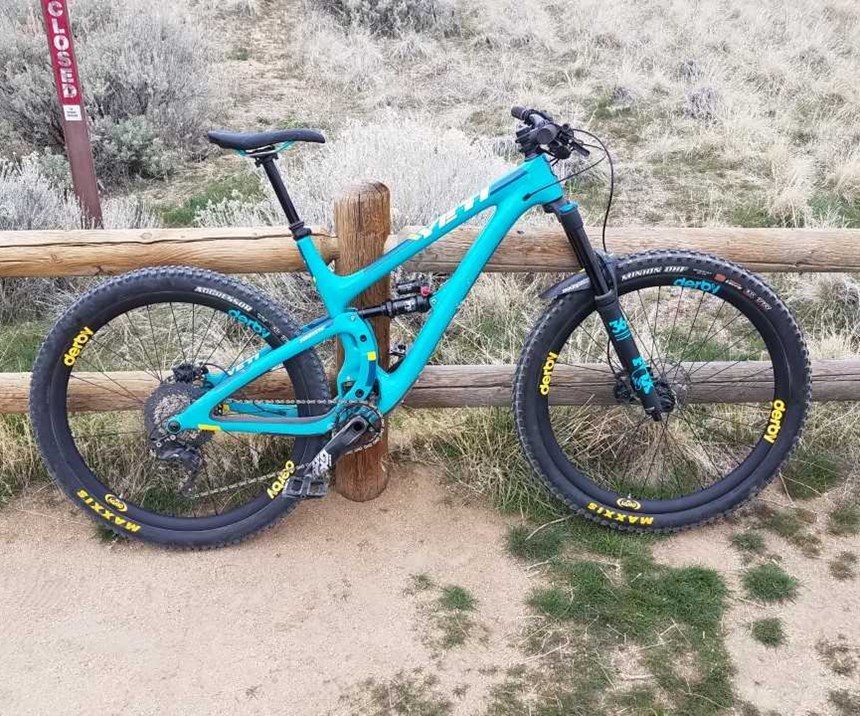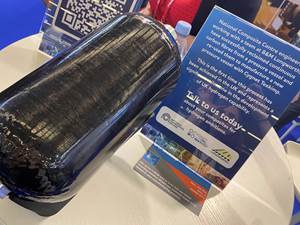Making better composite bikes, Part 2
My latest blog, about HIA Velo bicycles, concerned the use of high molecular weight polypropylene (HMWPP) combined with carbon fiber for more durable bicycle frames. But there’s more to cover on this topic: bicycle rims (wheels) that combine carbon and HMWPP for greater toughness.
My latest blog, about HIA Velo bicycles, concerned the use of high molecular weight polypropylene (HMWPP) combined with carbon fiber for more durable bicycle frames. But there’s more to cover on this topic: bicycle rims (wheels) that combine carbon and HMWPP for greater toughness. I recently had the opportunity to speak with Ray Scruggs, the founder, owner, and product designer of Derby Rims LLC (San Anselmo, CA, US). The company is named for Scruggs’ nickname (derby), which came from his participation in friendly mountain bike gatherings, or derbys, in the California mountains.
Scruggs began designing and testing carbon fiber bicycle rims in 2012, and sold his first mountain bike rims, which were wider than any available at the time, in 2013. Says Scruggs, “My carbon fiber rim designs had much improved thicker, more durable upper rim walls and tire retention safety over existing carbon rims.” He adds that advanced riders recognized the advantages of improvements in width, durability and safety. Scruggs continued investing all proceeds from rim sales back into the business, while continuing his day job testing and developing business software. He explains that he filed patent applications for new designs for self-protection but adds “My designs were immediately closely copied by nearly every carbon fiber rim brand.”
Scruggs’ wheel designs were manufactured by a Chinese company with expertise in carbon composites and bicycles. He says he was “amazed” when he evaluated the performance of the first rims. That confidential manufacturer uses steel molds, lays up unidirectional carbon fiber in the molds, and employs a bladder for consolidation pressure for the hollow rim interior. After cure, and cooling of the mold, the rims are demolded, deflashed, sanded, drilled (for spokes), and finished (some with paint), says Scruggs: “The Derby Rims factory has 24 quality control sign-offs during production of each rim before shipping.”
Scruggs says that there is probably no greater intended impact use of carbon fiber than a mountain bike rim. They are subjected to frequent and irregular flex from rocks and tree roots along trails, and multiple heavy gravity loads (G-loads) during compression when the wheels are hitting obstacles and negotiating sudden drop-offs or jump landings, where a rider's full body weight often slams heavily on the bike seat and bottoms the suspension. Following introduction of the Derby Rims products, word quickly spread among riders and mountain bike racers of their quality and performance. The first Derby carbon fiber rims were 34 mm (inside width) and 40 mm (outside width), 31 mm in depth (top to bottom), and they had a wall thickness of 3mm, which greatly improved resistance to sharp hits on rocky trails and improved resistance to excessive rim flex, compared to aluminum rims and other composite rims. Indeed, Derby Rims were immediately 3 to 5 times more durable than any other carbon-fiber mountain rim available in 2013. That said, Scruggs says that carbon fiber rims can experience delamination and microfracturing during really hard hits, in the upper rim wall area (where the tire attaches to the rim).
“I was looking for further improvements in durability and I ran across the guys from Oxeon (Boras, Sweden), who invited me to CAMX in 2016 in Anaheim. So, I went to the show, and they introduced me to Jen Hanna of Innegra Technologies [Greenville, SC, US].” Hanna referred Scruggs to Innegra’s Russ Emanis, who provided various samples of Innegra fabrics and hybrid carbon-Innegra fiber materials, as well as multi-layer layup suggestions that included Innegra for a mountain bike rim design.
After experimentation with Innegra in various locations in the rim, Scruggs adjusted the layups for each wheel model and type. “The first calibrated machine load flex tests of test rims conducted in late 2017, of the Innegra S/carbon ‘hybrid,’ showed improved rim flex tolerance load numbers, compared to the normal production with 100% carbon fiber UD layup rims with the same weight and number of layers,” says Scruggs. Those results gave him the confidence to invest in a few more test rims and actual wheels for expert mountain bike rider testing.
In the spring of 2018, test rims with Innegra were provided to two Expert and Pro category downhill racers for real-world extreme use ride testing. The test riders experienced no rim failure during nearly 12 months of frequent race training use. Says Scruggs, “The Innegra hybrid test rims provided to my test riders have a significantly lighter rim layup compared to the 100% carbon fiber ‘Downhill’ model Derby rims they normally race on. The racers and I expected the much lighter Innegra hybrid layup rims to fail very quickly. But the Innegra hybrid test rims have continued to be used frequently for training rides for more than 2000 miles, and to endure some extremely hard use including landing 25-ft jumps and downhill race run obstacles at very high speeds over rocky terrain.”
Scruggs says he plans to continue testing this winter at a well-established durability test lab in Los Angeles, equipped with dynamic roller machines able to test up to 6 wheels at once with large bumps attached to the rollers and with heavy weight loaded on the test wheel axles. Two Innegra hybrid test wheels and two baseline production wheels will be tested to failure. “After this test I will have the confidence to invest in Innegra hybrid rims for production.”
Visit Scruggs’ Derby Rims web site here: https://www.derbyrims.com/leader-of-rim-design.html.
Related Content
JEC World 2022, Part 2: Recycling, natural fibers and additive manufacturing
CW associate editor Hannah Mason recaps several technologies seen on display at JEC World 2022, including new developments from Bcomp, Massivit 3D, Gen 2 Carbon and more.
Read MoreMaterials & Processes: Fabrication methods
There are numerous methods for fabricating composite components. Selection of a method for a particular part, therefore, will depend on the materials, the part design and end-use or application. Here's a guide to selection.
Read MoreDigital Demo: UV-Cured Powder Coating on Carbon Fiber
Keyland Polymer's R&D chemist will demonstrate the UV powder coating application process followed by UV curing on a carbon fiber water bottle holder. (Sponsored)
Read MoreColored carbon fiber composite bike wheels launched at The Cycle Show
Wheel brand Parcours reveals composite bike wheels using Hypetex colored carbon fiber to achieve aesthetic, lightweight and performance goals.
Read MoreRead Next
CW’s 2024 Top Shops survey offers new approach to benchmarking
Respondents that complete the survey by April 30, 2024, have the chance to be recognized as an honoree.
Read MoreFrom the CW Archives: The tale of the thermoplastic cryotank
In 2006, guest columnist Bob Hartunian related the story of his efforts two decades prior, while at McDonnell Douglas, to develop a thermoplastic composite crytank for hydrogen storage. He learned a lot of lessons.
Read MoreComposites end markets: Energy (2024)
Composites are used widely in oil/gas, wind and other renewable energy applications. Despite market challenges, growth potential and innovation for composites continue.
Read More




























